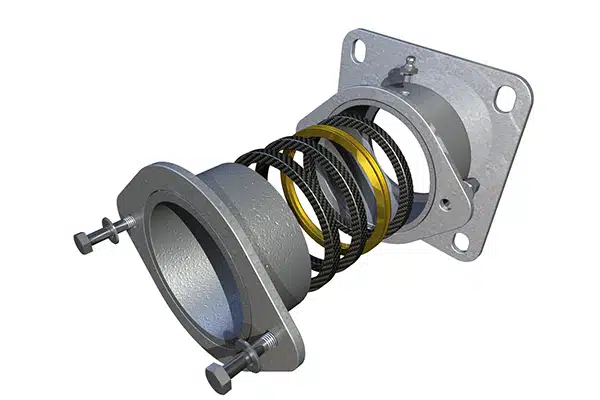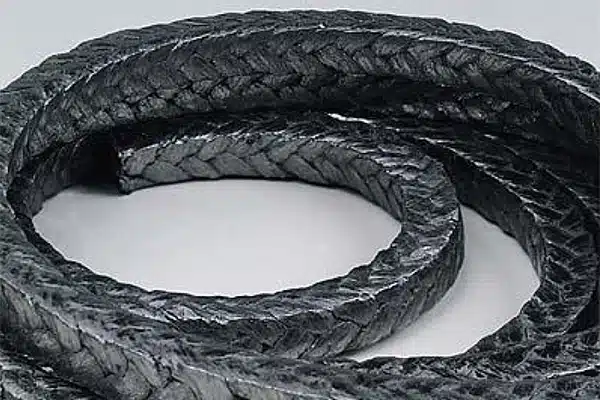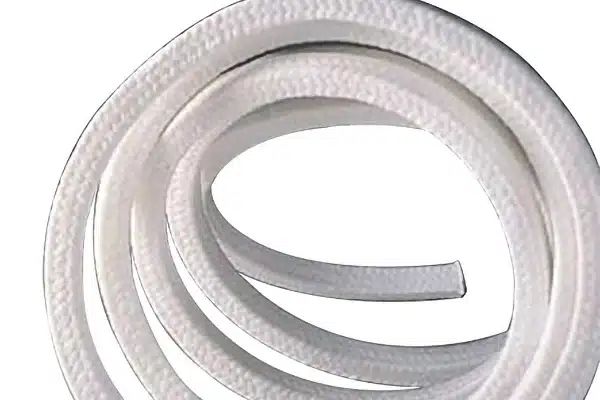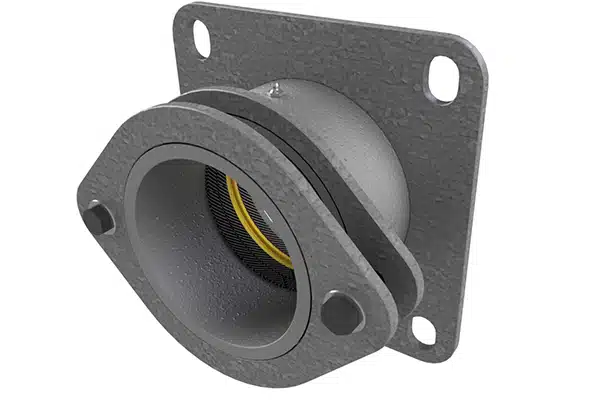Packing Material Options for Flanged Gland Seals
Introduction
KWS Flanged Gland Seals utilize braided rope packing to create a positive seal around the drive and tail shafts of screw conveyors, drag conveyors, and bucket elevators. The packing material consists of ½-inch square braided rope that fits tightly in the outer housing and around the diameter of the shaft. The seal follower is tightened to compress the packing and create a seal between the shaft and housing. Rope packing is available in many different materials to help satisfy any condition.
Features
Multiple Rings of Packing – Individual packing rings serve as sequential sealing elements, with up to five rings can be used to achieve proper shaft sealing.
Variety of Braided Rope Packing Materials
- Graphite Impregnated Packing – Commonly specified for many industrial sealing applications with thermal resistance up to 800-degrees F.
- Teflon Packing – Demonstrates superior performance in chemically aggressive environments and is resistant to a broad spectrum of chemicals, acids, bases, and solvents. Well-suited for critical applications in chemical processing.
- Ceramic Fiber Packing – Excels in extreme thermal conditions at temperatures reaching 2,300-degrees F. Preferred choice for high-temperature applications that exceed the operational limits of standard sealing materials.
Benefits
Ease of Maintenance – Braided rope packing can be replaced in minutes by sliding the follower back to allow access to the packing.
Cost Effective – Seal follower is adjusted to compensate for packing material wear without replacement.
Self-Lubricating – Rope packing materials have natural lubricating characteristics, minimizing maintenance requirements.
Low Leakage Rates – Braided rope packing provides excellent sealing with minimal leakage, helping meet environmental regulations and reducing bulk material loss.

Braided Rope Packing Fits Tightly in the Outer Housing and Around the Shaft Diameter

Graphite Packing Works Well in Most Industrial Applications

Teflon has Superior Chemical Resistance when Compared to Graphite

Ceramic Can Handle Temperatures up to 2,300-Degrees F







